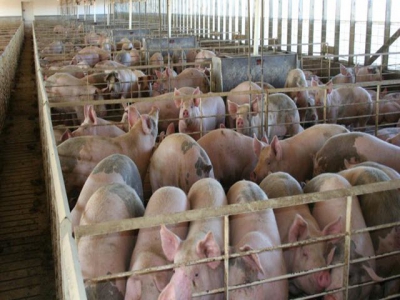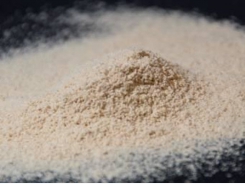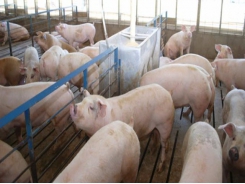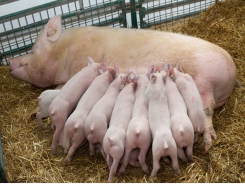N&H TOPLINE: Split-sex feeding may help optimize pig feeding

Implementing split-sex feeding in conjunction with phase feeding may allow swine nutritionists to further refine growing pigs' nutrient requirements.
Photo by DarcyMaulsby/iStock/Thinkstock
A pig’s nutrient requirements are dynamic, and as pigs grow heavier, their nutrient requirements decrease due to changes in body composition and maintenance requirements, Mandy Gerhart with Hubbard Feeds explained in a "Hubbard Swine Solutions" blog.
Phase feeding is a tool that can be used to more closely match the pig’s changing nutrient needs throughout the grow/finish period, Gerhart said. By feeding more phases, the instances of underfeeding (reducing growth potential) and overfeeding (wasting costly ingredients) can be reduced.
To further refine and more closely match the growing pig’s nutrient requirements, producers can also implement split-sex feeding in conjunction with phase feeding, she said, noting that barrows and gilts do not follow the same growth pattern and have different lean deposition rates from a bodyweight of approximately 70 lb. to market weight.
Since barrows tend to gain weight faster and put on muscle at a slower rate than gilts at the same stage, Gerhart said barrows can be fed diets with lower lysine levels than gilts, which reduces diet costs and nutrient excretion compared to feeding all pigs the same diet.
Gerhart noted that even though split-sex feeding makes theoretical sense, it is more of a logistical challenge than mixed-sex feeding, which may explain why the practice is not widely utilized.
At its Leavenworth Livestock Research Center, Hubbard Feeds decided to evaluate split-sex feeding as a part of the finisher portion of a larger wean-to-finish trial that was being conducted, Gerhart said. Barrows and gilts averaging 65 lb. were split into different pens at the start of the finisher period. In this study, all pigs were on the same feed budget and diet formulations.She said the research team observed that barrows had about an 8% improvement in average daily gain (ADG) and 12% higher feed intake compared to gilts. The gilts also exhibited an approximately 4% improvement in feed efficiency. According to Gerhart, differences were further observed in lean deposition, as gilts were about 5% leaner, with a 9% greater loin depth than the barrows. The findings corroborate those of previous Hubbard research conducted on split-sex feeding, she reported.
Feeding a lower-cost diet — due to lower protein and amino acid levels — to a higher-intake animal is economically attractive, especially going into the fall and winter markets, Gerhart said. However, producers must also consider any additional costs that may be associated with split-sex feeding, whether monetary or time related.
According to Gerhart, producers interested in split-sex feeding can try several different approaches, including:
1. Filling an entire barn/site with either barrows or gilts, and feeding them accordingly.
2. Splitting barrows and gilts into separate pens within the same barn with two different feed lines.
3. Splitting barrows and gilts into separate pens within the same barn but managing the feed budgeting by either:
* Feeding all pigs the same phase 1 feed. The gilts will receive more of phase 1, while barrows move on to phase 2. The gilts will always be fed one diet behind the barrows.
* Creating a more nutrient-dense phase 1 for gilts and scheduling them one diet behind the barrows. At the end of the feed budget, the gilts can be fed the last phase diet, while barrows can have an additional diet formulated.
Gerhart said the opportunity to continually fine-tune a herd’s nutrition generally results in improvements in performance, a reduction in nutrient excretion and diet cost savings. Phase feeding is a great tool for more closely matching the pig’s nutrient requirements, and using split-sex feeding in addition to phase feeding is an even more powerful tool producers can use to optimize production, Gerhart said.
However, she noted that split-sex feeding is not a one-size-fits-all solution. Producers who can utilize split-sex feeding without having to devote significant time or money to the process may realize additional economic benefits.
Related news
Tools

Phối trộn thức ăn chăn nuôi

Pha dung dịch thủy canh

Định mức cho tôm ăn

Phối trộn phân bón NPK

Xác định tỷ lệ tôm sống

Chuyển đổi đơn vị phân bón

Xác định công suất sục khí

Chuyển đổi đơn vị tôm

Tính diện tích nhà kính

Tính thể tích ao




 Protein digestibility of grain, oilseed co-products examined for…
Protein digestibility of grain, oilseed co-products examined for…  Iron supplement type may boost piglet organ weight,…
Iron supplement type may boost piglet organ weight,…